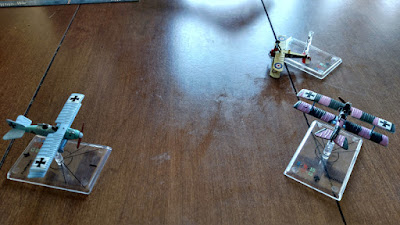241 years
ago, on August 16th, 1777, Lt. Col. Friedrich Baum and Lt.
Col. Heinrich von Breymann led an attack against the town of
Bennington in the New Hampshire Grants with the main goal of
capturing supplies stored in the village there. Colonial forces, led
by Gen. John Stark of New Hampshire, met the German and Loyalist
troops just outside of Bennington, engaging in battle at Walloomsac,
New York. Stark's New Hampshire men, rebel militia, and Continental
Troops led by Col. Seth Warner, defeated the invading troops in what
many call a turning point in the Saratoga campaign of the
war.
 |
| Bennington Battle Monument |
Today, in Bennington, a stone monument, over 300 feet
tall, marks the location of the storehouse that was the target of the
German forces. Each year the State of Vermont celebrates Bennington
Battle Day on the 16th of August. Our only state holiday,
we pause to remember the battle that took place nearby.
Bennington Battle Day has another
meaning for me. In 2014, the
reenactment of the Battle of Bennington
was my first time taking part in “Living History”. I had joined
up with
Warner's Regiment, a group of reenactors who portray Seth
Warner's Extra-Continental Regiment, but I hadn't yet taken part in
an event. The Battle of Bennington would be my first.
I
arrived in the morning with a half-price musket and a few clothes I
had sewn for myself, nervous at the idea of spending the day with
strangers (I'm a natural introvert). After getting signed in, and
meeting Warner's, I quickly found myself in good hands. Spare
clothing and gear was literally being thrown in my direction, and
within minutes I had been transformed from awkward 21
st
century guy to awkward 18
th century militia guy.
 |
| Militia at Bennington. I'm in the blue coat, 2nd rank in the center. |
During the morning I received some
training in basic musket use and maintenance, safety, and some basic
commands. By afternoon, we were ready to take the field. Not being
safety cleared yet, I was to go out with a wooden driver in my
musket, meaning it would function as it should, but would not spark.
This would allow me to follow the unit, go through the motions of
firing, but not be a danger to myself or anyone around me should I do
something wrong. We marched from our camp next to the Walloomsac
River to the top of the hill at Bennington Battlefield. Our route
took us through the woods, and everyone quickly fell into character.
As we walked, warnings of “Keep an eye on the trees. Look for the
white trim on their caps,” were whispered. I was easily
transported back 230+ years. I was a nervous 18th century
militia man, tagging along with veteran troops, with no idea what to
expect next. I imagined the residents of Bennington felt much the
same way during the time period.
Once we were at the top of the hill,
the modern world came back. It was a warm August day, and health and
safety is priority #1. Bottled water was handed out to troops on
both sides of the conflict, and jokes were traded as red-coated
troops walked past our line to get into their starting position for
the public portion of the event. They soon disappeared back into the
woods, and we were sent to our starting position.
We started
off in a thicket on the far side of an open field. Being New
England, the thicket was covered in prickers and pokey things, making
it easy to become entangled. Fighting in this kind of terrain, I
quickly learned, is the Warner's Way.
 |
| My first taste of battle. |
Soon the battle started. The pop of a
musket could be heard in the distance, then suddenly we were moving.
We came out of the thicket, quickly crossed the open field, then were
back into the woods. I don't recall when the smoke started, or what
was going on along either side of me. My main focus was to stay with
the unit, and go through the motions of firing a musket. At some
point the word “FENCE!” came through to my brain, and I realized
that we were all about to charge through a barbed wire fence in the
woods. We came to a quick halt while an opening was found. We all
shifted positions to move through the opening, then went back into
line. Soon we were through the woods, facing the main road at the
top of the Battlefield. Calls of “PUBLIC TO THE FRONT!” were
heard. We hunkered down in the bushes, still trading shots with the
enemy, just being very careful of where we were pointed.
The charge below, I think, is one of
the coolest photos I've seen from an event. When the order was given, the entire
militia line sprang from the woods, crossed the road, and assaulted the
German redoubt. With the capture of the redoubt, phase I of the
recreated Battle of Bennington was complete, and I had had my first
taste of being a reenactor.
 |
| CHARGE!! |
I was hooked.
Another couple of battles happened that
weekend, along with a commemoration ceremony. Last year, in 2017, we
returned again to assault the redoubt. This time, however, I had all
my own gear, and a couple of years of reenacting behind me. That was
the year of the infamous Hessian melee attack, which single-handedly
wiped out a large percentage of the American forces (2 of us) and
caused a disturbing safety issue (fortunately the entire line didn't
fire point blank at the guy). Below is my lifeless body,
respectfully covered by our regimental pastor as he checked for dead
and wounded in the aftermath.
 |
| Pvt. E. Davis, slain by a Hessian sabre - Rest in Peace. |























































